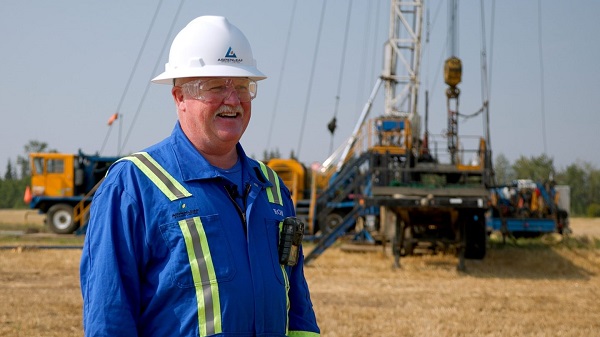Business
Federal government increased number of public service employees by more than 40%

From the Fraser Institute
By Jake Fuss and Grady Munro
“the size of the federal public service reached 274,219 employees in 2022/23—an increase of 40.4 per cent since 2014/15”
Over the last eight years the Trudeau government has expanded the size of the federal public service to ensure it plays a more active role in the Canadian economy. However, there’s little evidence that this bigger government has made Canadians better off.
According to the Public Service Commission of Canada, the size of the federal public service reached 274,219 employees in 2022/23—an increase of 40.4 per cent since 2014/15. And according to data from the Parliamentary Budget Officer, total compensation for federal bureaucrats (adjusted for inflation) increased by nearly 37 per cent between 2015/16 and 2021/22.
This is occurring even as government workers in Canada already enjoy a substantial wage and benefit premium compared to comparable workers in the private sector. According to a recent study published by the Fraser Institute, in 2021 (the latest year of comparable data) government workers at all levels (federal, provincial and local) received wages that were 8.5 per cent higher, on average, than Canadians employed in the private sector. (The study controls for factors such as gender, age, education, tenure and industry to provide an “apples to apples” comparison among workers.)
But higher compensation and an increasing size of the federal public service have not provided better access to government programs and services or translated into tangible economic results for Canadians.
A recent poll found that only 16 per cent of Canadians believe they get good or great value from the services they receive from governments such as health care, education, police, roads and national defence. Nearly half (44 per cent) of Canadians believed they receive poor or very poor value from the services they receive.
Moreover, living standards have only improved marginally in Canada since 2015. Gross domestic product (GDP) per person—a broad measure of living standards—has grown by a meagre 5.1 per cent (inflation-adjusted) over the last eight years. By comparison, Americans have seen their living standards grow by nearly three times as much over the same timeframe.
To put this into further perspective, total compensation and employment for federal bureaucrats are increasing much faster than living standards for Canadians.
These results are not surprising. Bigger governments are not necessarily better than smaller ones. Empirical economic research suggests that economic growth is maximized when government spending ranges between 24 per cent and 32 per cent of the size of the national economy. When government spending exceeds this optimal range, government impedes both economic growth and improvements in living standards. Unfortunately, Canada’s size of government (federal, provincial and local) was far beyond the optimal level at 40.5 per cent of GDP in 2022.
Since 2015, the Trudeau government has added more administrators and managers to the federal public service and significantly increased spending—while failing to help raise the living standards of Canadians. Entrusting bureaucrats to pick winners and losers by subsidizing certain industries instead of others has not been a recipe for economic success. Instead, Ottawa appears to be competing with the private sector for skilled workers and inhibiting the national economy in the process.
Canada needs a leaner and more efficient federal government that focuses only on its core functions. Bigger government hasn’t been good for Canadians, it’s only been good for government workers.
Authors:
Business
What Pelosi “earned” after 37 years in power will shock you

Nancy Pelosi isn’t just walking away from Congress — she’s cashing out of one of the most profitable careers ever built inside it. According to an investigation by the New York Post, the former House Speaker and her husband, venture capitalist Paul Pelosi, turned a modest stock portfolio worth under $800,000 into at least $130 million over her 37 years in office — a staggering 16,900% return that would make even Wall Street’s best blush.
The 85-year-old California Democrat — hailed as the first woman to wield the Speaker’s gavel and infamous for her uncanny market timing — announced this week she will retire when her term ends in January 2027. The Post reported that when Pelosi first entered Congress in 1987, her financial disclosure showed holdings in just a dozen stocks, including Citibank, worth between $610,000 and $785,000. Today, the Pelosis’ net worth is estimated around $280 million — built on trades that have consistently outperformed the Dow, the S&P 500, and even top hedge funds.
The Post found that while the Dow rose roughly 2,300% over those decades, the Pelosis’ reported returns soared nearly seven times higher, averaging 14.5% a year — double the long-term market average. In 2024 alone, their portfolio reportedly gained 54%, more than twice the S&P’s 25% and better than every major hedge fund tracked by Bloomberg.
Pelosi’s latest financial disclosure shows holdings in some two dozen individual stocks, including millions invested in Apple, Nvidia, Salesforce, Netflix, and Palo Alto Networks. Apple remains their single largest position, valued between $25 million and $50 million. The couple also owns a Napa Valley winery worth up to $25 million, a Bay Area restaurant, commercial real estate, and a political data and consulting firm. Their home in San Francisco’s Pacific Heights is valued around $8.7 million, and they maintain a Georgetown townhouse bought in 1999 for $650,000.
The report comes as bipartisan calls grow to ban lawmakers and their spouses from trading individual stocks — a move critics say is long overdue. “What I’ll miss most is how she trades,” said Dan Weiskopf, portfolio manager of an ETF that tracks congressional investments known as “NANC.” He described Pelosi’s trading as “high conviction and aggressive,” noting her frequent use of leveraged options trades. “You only do that if you’ve got confidence — or information,” Weiskopf told the Post.
Among her most striking trades was a late-2023 move that allowed the Pelosis to buy 50,000 shares of Nvidia at just $12 each — less than a tenth of the market price. The $2.4 million investment is now worth more than $7 million. “She’s buying deep in the money and putting up a lot of money doing it,” Weiskopf said. “We don’t see a lot of flip-flopping on her trading activity.”
Republicans blasted Pelosi’s record as proof of Washington’s double standard. “Nancy Pelosi’s true legacy is becoming the most successful insider trader in American history,” said RNC spokesperson Kiersten Pels. “If anyone else had turned $785,000 into $133 million with better returns than Warren Buffett, they’d be retiring behind bars.”
Business
Ottawa should stop using misleading debt measure to justify deficits

From the Fraser Institute
By Jake Fuss and Grady Munro
Based on the rhetoric, the Carney government’s first budget was a “transformative” new plan that will meet and overcome the “generational” challenges facing Canada. Of course, in reality this budget is nothing new, and delivers the same approach to fiscal and economic policy that has been tried and failed for the last decade.
First, let’s dispel the idea that the Carney government plans to manage its finances any differently than its predecessor. According to the budget, the Carney government plans to spend more, borrow more, and accumulate more debt than the Trudeau government had planned. Keep in mind, the Trudeau government was known for its recklessly high spending, borrowing and debt accumulation.
While the Carney government has tried to use different rhetoric and a new accounting framework to obscure this continued fiscal mismanagement, it’s also relied on an overused and misleading talking point about Canada’s debt as justification for higher spending and continued deficits. The talking point goes something like, “Canada has the lowest net debt-to-GDP ratio in the G7” and this “strong fiscal position” gives the government the “space” to spend more and run larger deficits.
Technically, the government is correct—Canada’s net debt (total debt minus financial assets) is the lowest among G7 countries (which include France, Germany, Italy, Japan, the United Kingdom and the United States) when measured as a share of the overall economy (GDP). The latest estimates put Canada’s net debt at 13 per cent of GDP, while net debt in the next lowest country (Germany) is 49 per cent of GDP.
But here’s the problem. This measure assumes Canada can use all of its financial assets to offset debt—which is not the case.
When economists measure Canada’s net debt, they include the assets of the Canada Pension Plan (CPP) and the Quebec Pension Plan (QPP), which were valued at a combined $890 billion as of mid-2025. But obviously Canada cannot use CPP and QPP assets to pay off government debt without compromising the benefits of current and future pensioners. And we’re one of the only industrialized countries where pension assets are accounted in such a way that it reduces net debt. Simply put, by falsely assuming CPP and QPP assets could pay off debt, Canada appears to have a stronger fiscal position than is actually the case.
A more accurate measure of Canada’s indebtedness is to look at the total level of debt.
Based on the latest estimates, Canada’s total debt (as a share of the economy) ranked 5th-highest among G7 countries at 113 per cent of GDP. That’s higher than the total debt burden in the U.K. (103 per cent) and Germany (64 per cent), and close behind France (117 per cent). And over the last decade Canada’s total debt burden has grown faster than any other G7 country, rising by 25 percentage points. Next closest, France, grew by 17 percentage points. Keep in mind, G7 countries are already among the most indebted, and continue to take on some of the most debt, in the industrialized world.
In other words, looking at Canada’s total debt burden reveals a much weaker fiscal position than the government claims, and one that will likely only get worse under the Carney government.
Prior to the budget, Prime Minister Mark Carney promised Canadians he will “always be straight about the challenges we face and the choices that we must make.” If he wants to keep that promise, his government must stop using a misleading measure of Canada’s indebtedness to justify high spending and persistent deficits.
-

 Business2 days ago
Business2 days agoCarney budget doubles down on Trudeau-era policies
-

 COVID-192 days ago
COVID-192 days agoCrown still working to put Lich and Barber in jail
-

 Business2 days ago
Business2 days agoCarney budget continues misguided ‘Build Canada Homes’ approach
-

 Business2 days ago
Business2 days agoCarney’s Deficit Numbers Deserve Scrutiny After Trudeau’s Forecasting Failures
-

 armed forces1 day ago
armed forces1 day agoIt’s time for Canada to remember, the heroes of Kapyong
-

 International2 days ago
International2 days agoKazakhstan joins Abraham Accords, Trump says more nations lining up for peace
-

 Alberta1 day ago
Alberta1 day agoAlberta’s number of inactive wells trending downward
-

 Censorship Industrial Complex1 day ago
Censorship Industrial Complex1 day agoSchool Cannot Force Students To Use Preferred Pronouns, US Federal Court Rules











